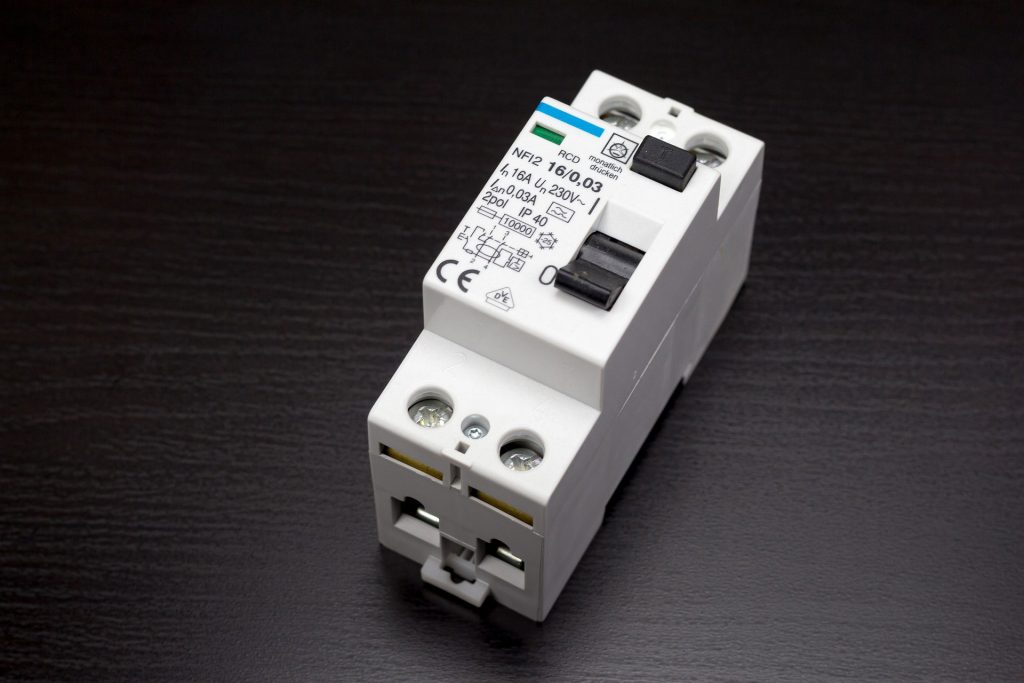Understanding how the home electrical system works is surely something that only some people have the patience to deal with. I am one of them, for sure.
Taking precautionary measures before fixing any appliances is crucial. This particularly applies to washing machines. So, I was also wondering: “What size breaker do I need for a washing machine?”
Here, you’ll find the instructions on choosing the right breaker size according to your appliance amp rate so you can avoid any electrical disturbances in your home.

What Size Breaker Do I Need for a Washing Machine?
When someone asks me: “What size breaker do I need for a washing machine?” I advise them to check the number of amps labeled on the appliance body or manufacturer manual.
If the washing machine is 10 amp, it’s recommended to use a 10-15 amp breaker. For a 20-amp washing machine, a 20-30-amp breaker would be the best option.
In general, a standard washing machine would need a 20-amp circuit breaker with a 12-gauge two-wire cable connected to it.
Make sure it is a dedicated circuit that runs from the circuit breaker box to the washing machine receptacle without any tapped connections in between.
Choosing Circuit Breaker and Safety Tips
Check your washing machine specifications
First things first, you must know that not all washing machines use the same type of receptacle, so if you want to use a circuit breaker, you should check the specifications before purchasing the receptacle.
To prevent facing any problems, it’s important not to oversize the circuit breaker. Some washing machines require a 30-amp receptacle, but most work with a maximum of 15 amps.
Check the wattage rating of your washing machine to determine whether it uses more than 30 amps.
Read more: Do Washing Machines Use A Lot Of Electricity?
Use a dedicated circuit for your washing machine
If your washing machine uses a dryer, remember that you cannot use the same circuit for another appliance. In this case, you’ll need to buy a separate 30-amp breaker for the other appliance.
For a gas dryer, you’ll need a dedicated 240-volt circuit and a double pole breaker of 30-amp in the receptacle.
It’s recommended that washing machines use a dedicated circuit to ensure a long lifespan of the appliance since they are most prone to damage over time.
A dedicated circuit will prevent short circuits and other electrical issues that happen because of the high voltage and powerful performance rating of the washing machine.
Protect the washing machine area with GFCI
In 99.9% of the cases, it’s recommended for the washing machine outlet to be GFCI-protected. GFCI (Ground-Fault Circuit Interrupter) is the easiest and cheapest method to comply with NEC 210.8 (A).
Since most washing machines need at least a cold water supply to operate, 210.8 requires that if a receptacle is within six feet of a water source, you must have GFCI for personal protection.
Keep in mind that if you want ground protection on all outlets, then the GFCI should be the first. Otherwise, the ones before the GFCI will not be ground-fault protected but will deliver power.
Also read: How Powerful Is A Washing Machine Motor?
Common Problems With Washing Machine Circuit Breakers and How to Fix Them
Having a circuit breaker is essential to keep your home safe from hazards. Its main function is preventing fire and not overheating the equipment.
For the washing machine to operate properly, it requires reliable wiring. Regular tests on the electrical socket are important to determine if the wiring is properly connected.
The circuit breaker trips
One of the most common problems for the circuit breaker is to trip. Tripping happens when the electrical switch has lugs on the outside, causing a clog of the circuit breaker. When this problem appears, your washing machine will stop working.
Some of the potential reasons why this happens include:
- The breaker is the wrong rating for the washing machine.
- The washing machine draws more power than it’s supposed to.
- There is another appliance powered on the same breaker as the washer, making the total draw more than the breaker is rated for.
In this case, you have to check the nearby socket and see what other appliances are plugged in. Then, unplug everything else on that circuit except your washing machine.
If the problem persists after unplugging all the appliances, the issue might also be in the fuse box or the machine itself. In this case, I strongly advise you to call an electrician.
Conclusion
Understanding the intricacies of the home electrical system is vital when dealing with appliances like washing machines. To ensure safety and prevent electrical disturbances, taking precautionary measures is crucial.
So, what size breaker do I need for a washing machine? When determining what size breaker you need for a washing machine, always check the appliance’s amp rating as labeled on the body or in the manufacturer’s manual.
Match the breaker size accordingly to avoid overloading the circuit. Generally, a 20-amp breaker with a 12-gauge two-wire cable is suitable for a standard washing machine. Always use a dedicated circuit for the washing machine to prevent damage and electrical issues.
Following these guidelines, you can confidently select the right breaker size for your washing machine and maintain a safe and efficient home electrical system.







